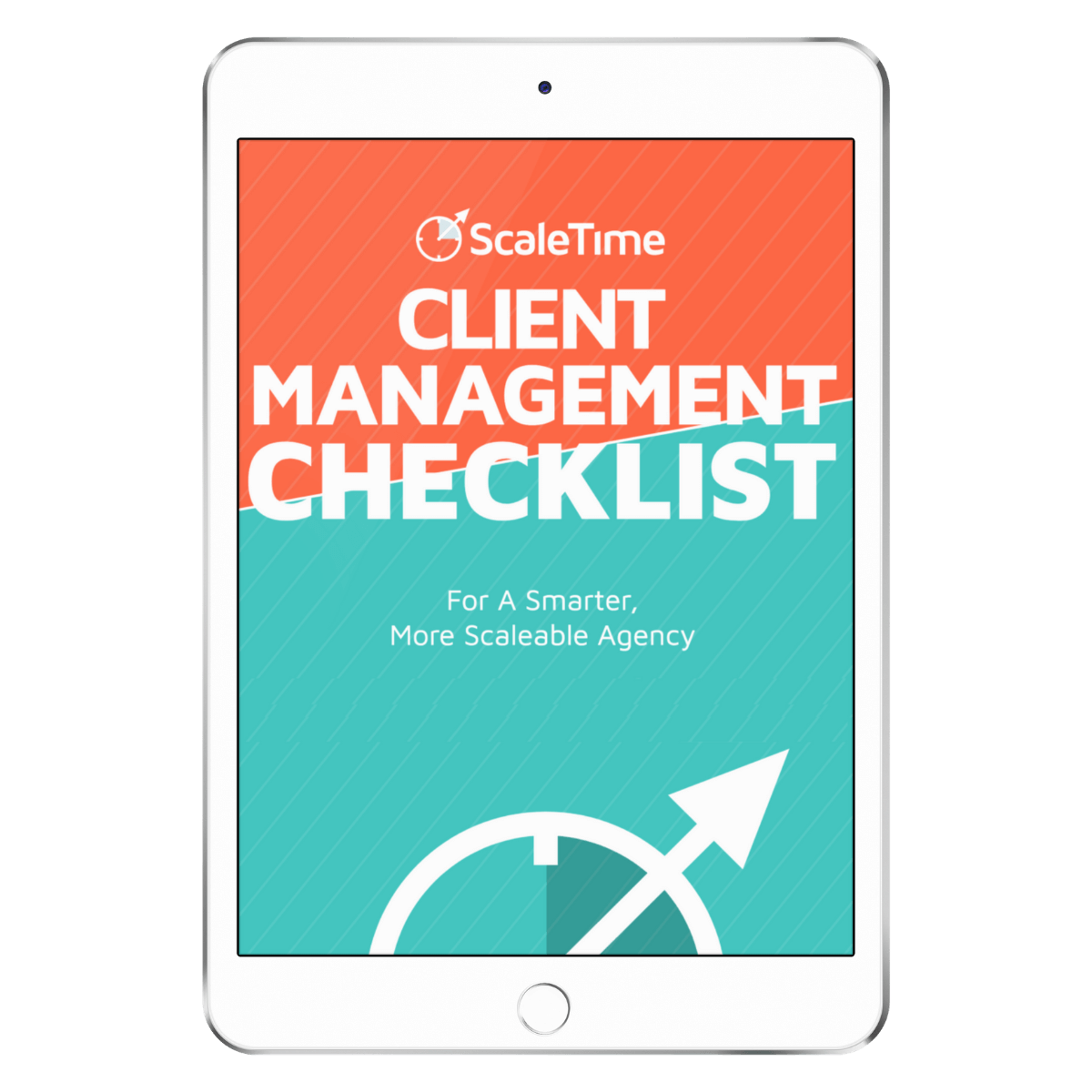
Businesses need a well-defined sales process like a car needs an engine. Without it, your company won't run effectively — or in some cases, at all.
Let's make sure you don't have to park your stalled business on cinder blocks.
A great sales process will enable your sales team to become more efficient at, well, selling, since their main focus is customer conversion rates. And best results? It saves time as the defined sales process prevents sales representatives from wasting time on unnecessary duties.
Plus, your sales process will encourage collaboration between various stakeholders, reducing confusion between departments.
But to get all that good stuff for your business, you've got to make sure that your sales process map is efficient and standardized.
How?
The sales process must include a clear picture of the seven key stages to get the sales process results you want:
- Prospecting and lead generation
- Qualification
- Needs analysis
- Presentation
- Value proposition
This guide elaborates more on the sales process secrets and the sales stages we recommend you adopt for an effective sales cycle.
Why Unlock Sales Process Secrets?
Before exploring the sales process secrets, let's review the key steps for easy understanding.
What Is Sales Process?
The sales process is the repeatable steps the sales department takes during a sales cycle to convert prospective clients into actual paying clients. It's important for a sales rep to understand the selling methodologies in a winning sales process since this will power your business with more deals and repeat business.
Additionally, the best sales processes also include must-have information on buyer personas and ideal customer profile. The sales process equips salespeople with insights to navigate customer objections and prevent deals from stalling.
How a Structured Approach Enhances Consistency and Efficiency
One of the best things about having a structured sales approach is it enhances consistency and efficiency. This is possible because it gives the sales reps a standard framework to follow. The standardized sales process can help less-experienced team members get up to speed on your business's sales process quickly.
That makes sales hiring less challenging, since you have techniques and repeatable processes on speed dial, reducing friction with onboarding and training new hires.
Since the sales process ensures every customer gets equal service, it helps create a consistent system. A consistent and effective sales process improves customer experience, customer satisfaction, and loyalty. Furthermore, it boosts revenue as your sales team can use the standardized approach to close more deals efficiently.
Prepare For Goodnight’s Sleep: Sales Process Stages in Digital Agencies
If you want to have a good night's sleep, ensure you understand all your business selling process stages. As a digital sales agency, we recommend that you follow the below sales process examples to have an effective and consistent sales funnel:
Stage 1: Prospecting and Lead Generation

The first step you need to master is searching for new customers. Implementing the company's sales lead generation process is much easier after you create a buyer persona and ideal customer profile (ICP) documents. You can find this information in your company’s sales history, which contains who bought from you, what they bought, and why.
Use the BP and ICP documents to identify the pain point that compelled the customer to search for your offering. Then, create your findings in an easy-to-understand format and share them with your sales reps.
What if you don't have a company sales history, or it's lacking? You can also identify your target audience through social media, cold calling, email outreach, and networking events.
Prospecting through social selling tools like LinkedIn Sales Navigator can also help you automate the process and get your prospects' attention.
You can also get new customers by asking existing clients or friends to refer others who might need your products or services.
Importance of Quality Over Quantity in Leads and Focusing on Leads That Align with Target Customer Profile
However, it’s important to focus on quality leads instead of quantity of leads. This is because the quality sales lead generation process gives the prospects a high chance of becoming paying customers, increasing your chances of getting more revenue, which acts as KPI.
This isn't the same as lead quantity, where forecasting the number of leads is a must.
To ensure a faster sales process, you must focus on bringing in leads that align with the target customer profile.
Stage 2: Qualification and Needs Analysis
After establishing a stronger relationship with the prospects, it's time to assess their needs. The phone is your friend. Phone calls enable your sales team to understand the new customer's challenges and how your product or service can offer real-time solutions.
Research the prospect’s demographics, pain points, behaviors, and preferences through their website, social media pages, or blogs. Then, qualify the new leads by segmenting them to help you determine why they’re a good fit for your business. And if they're more likely to become repeat business.
You can use different methods like CHAMP or MEDDIC to position your offerings and quantify prospects, but the BANT strategy is common.
Use BANT (budget, authority, need, and timescale) after asking these questions:
- What is your budget for this project, and is it enough?
- What's your timeline, and when do you need the solution to be ready?
- What are the decision-making processes to get authority in your organization?
- How are you dealing with the challenges, and what do you expect to be different from us?
If the prospect qualifies for the above criteria, they're a perfect lead. But if not, go back to the drawing board. If possible, work with quality potential leads to have an easy time.
The Significance of Aligning Your Product or Service with Customer’s Needs
Ensure you align your services and products with the potential customer's needs when qualifying the prospects. This is a must for revenue generation. You'll see increased customer satisfaction and improved product or service value.
It can also give you a competitive edge, which every business needs to acquire a bigger market share.
Stage 3: Presentation and Value Proposition

The next step of the sales process steps is the presentation and value proposition. Your sales pitch is significant in convincing prospects to buy and become loyal customers.
Here's how:
Address Pain Points
This stage is a bit easier since you already know the your ideal client profile pain points. Use your prospects' problems or bottlenecks as your selling points for offering solutions. You can show them how your product can solve their problems through a demo.
Benefits and Features
Talk about how the product can benefit its users. For example, if you're dealing in beauty products, mention how they can help users get clearer skin.
Use Storytelling and Anecdotes
Don't forget to mention the benefits of the product using real-world examples in a storytelling manner. For example, you can produce illustrative videos showing how the product features helped change a customer's life.
For your presentation to have a value proposition, ensure the following:
- Customize the presentation for every new customer or customer segment, depending on their needs
- Understand the features and benefits of your products and use them to answer the prospect's questions
- Keep the presentation short and clear yet informative
- Support your presentations with evidence and build credibility using customer testimonials or your awards
- Study your competitor's presentations and use them as a guide to show your prospects how you are the best option
Stage 4: Objection Handling

While preparing your sales team for the task ahead, don't forget to teach them how to handle objections.
Objection handling should be part of the sales steps since your team is talking to a person with a brain. Objections are par for the course. That doesn't mean the prospect is a poor lead and it's useless to try and convince them. Instead, tactfully convince them to buy after listening to and addressing their concerns.
The best strategies for handling objections include:
Active Listening
Even though handling objections in sales can be challenging, it's easier if you become an active listener. Active listening can help you build trust with prospects since it demonstrates that you're aware of their concerns and are accounting for them.
So, when the prospects are talking, give them space to do so without interjecting.
Listen to their goals, fears, rants, wants, and motivations to better handle the situation. Through active listening, you will also build an authentic connection with the prospect, which is necessary for positive results for both parties.
Then, identify the true objection. Remember, the prospect won't mention only one complaint; their main concern is never on the first issue. So take your time and go beyond the first excuses they give to know how to handle the objection.
Offering Solutions

After identifying the true objection, now's the right time to offer solutions.
Ensure you empathize with the prospect and let them know you understand their problems. If the prospect is objecting to your products because it's expensive, look for metrics to show the product's value. Talk about how your product can help solve their pain points and needs instead of dwelling on numbers.
You can also use evidence to win the prospect's trust, especially if many customers have the same objection point. Prepare enough proof that shows happy clients who also had similar concerns. Customer testimonials or case studies can help you offer the best convincing solution to the objecting clients.

Not Getting Defensive
Don't get defensive when a client objects.
For example, if the prospect objects to the price of your products, don't be defensive about it, as this can result in arguments. Being defensive can also make the prospect more resistant and damage the relationship, which is the last thing you want.
Instead of being defensive, listen to and empathize with their concerns. Then, ask open-ended questions to understand their needs, challenges, and goals. Use their concerns as your sales lead generation process to offer solutions and win them over.
Be careful not to talk too much while trying to convince the prospects; listen and ask more questions.
It's Time to Close The Deal

The sales process steps cannot be complete without closing a deal. That's why you need the right strategies to close the deal after overcoming the objections. You can convert prospects into customers using the following techniques:
Assumptive close

An assumptive close is where you assume the prospect is ready to close. This technique can help convince the prospect to close the deal, but it's upon you to pull the trigger.
For example, ask questions like, “Is this the product you've been looking for?"
Such questions help create positivity and are the best way to earn the prospect's trust and leave them with the option of making decisions.
Trial Close
You can use this sales lead generation process technique, which asks the customers for their opinions regarding your products to close a deal. It assesses the buyer's readiness to make a deal by asking open-ended questions like, “How do you feel about the product? What are you thinking?"
It lets you test the customer's feelings and opinions, which helps you handle objections.
After listening to the answers to the open-ended questions and the prospect's views, address their needs. Then, offer solutions that convince them to close the deal.
Urgency Close

Urgency close is another effective way to close a deal during sales.
In this technique, prospects make the fast decisions to buy. Use terms like” offer valid until” or “limited open slots available” for a positive outcome.
When using this technique, ensure the directive is true to avoid losing the prospect's trust.
Importance of Clear Communication and Confidence
You must be confident and communicate clearly when using different selling methodologies to close deals. Clear communication helps build strong relationships with customers and colleagues, making the sales process easy to complete.
Communicating clearly also enables the customers to understand the benefits of your products or services, which can convince them to buy. Plus, it helps you understand the customer's needs, pain points, and preferences, making handling the roadblocks during objections easier.
On the other hand, confidence is important in building trust. Confidence will help you communicate clearly and convince customers to seal deals. A confident sales representative can also offer the best solutions and not become defensive when a prospect questions their product.
Stage 6: Maintain A Healthy Customer Relationship
Customers are what keeps your business running. A successful company must have a sales process that maintains a healthy customer relationship. Nurturing customer relationships will result in loyal clients who are ready to stand with you no matter what.
Relationship building will also increase referrals, drive recurring revenue, enhance customer satisfaction, reduce complaints and product returns.
The post-sale activities help in the following during the sales process:
Onboarding
The business selling process requires a strong onboarding process to increase customer retention. So, your post-sales team should send the prospects company messages consistently. This can make the customers eager to use the advertised products or services, reducing buyer churn.
Sales managers should also train new customers to use their products and services. Plan for mock training sessions so the new customers can use the products themselves.
Follow-up for Feedback
The sales team must also ensure they do follow-ups for feedback during the sales process workflow.
The follow-up can help identify the customer's concerns and reduce the churn rates. It can also enable you to identify customers at risk of churning and look for ways to intervene to retain them.
You can identify such customers by looking at their purchase history. Then, consider listening to their complaints and respond with solutions that can convince the potential customer to stay.
Upselling and Cross-Selling Opportunities
After the selling process steps help you acquire a new customer, you must maximize the customer's lifetime value (CLV) through up-selling and cross-selling.
As a sales rep, learn how to communicate with customers to improve your relationship. Cross-selling lateral products that complement the initial purchase through established customer relationship management (CRM) will be easier.
With good customer interactions, it's also possible to convince customers to upgrade the original product they bought. But you must be good at listening and quickly offering the right solutions to them.
Do this after using customer feedback to create customers' personas and journeys, which is helpful in knowing how your products can help them grow.
Remember, when customers are happy about your products or services, they will likely make referrals and are ready for your upselling or cross-selling pitches.
Stage 7: Finally, Enjoy a Restful Sleeping!
Since the sales process is like a nighttime routine, which looks different for everyone, you must customize the key steps. This final stage requires you to customize the sales steps to be unique and ahead of the competition.
Importance of Customizing the Sales Process to Your Industry, Product, and Audience
Customizing your own sales process comes with a lot of benefits, which include the following:
It helps you understand your customer's preferences and ways to meet their demands
Knowing what your customers want and providing it makes you more competitive in the market. Meeting customer's demands through the best-selling process steps also converts them into loyal customers.
It also Improves Your Sales
Customizing the business selling process enables you to give customers preferred products that meet their demands and are high quality. This can also boost sales and referrals as the customers come out satisfied.
Helps Justify Prices
Most of the time, customers object to your products or services because of high prices. However, when you customize the sales process to meet the customer's wants, it becomes easier to justify your prices without a struggle. Your customers will understand that the extra price met their desired needs or pain points and will not object to what you're selling.
How Do You Adapt the Stages to Fit This?
Customizing your sales steps can be challenging if you don't understand what your customers want and the nature of your industry and products. You have to take time and research your industry and the customers' behavior. After that, major on the features of your products, their benefits, and how they can offer the desired solution to your customers.
Segment the customers and tailor your presentations according to their needs to convince them to close deals. Ensure you clearly communicate and build a strong customer relationship for longer business transactions.
Let's recap:
- The sales process happens in 7 stages, but you can customize them according to your industry, product, or audience.
- First, you must identify new prospects and quantify them depending on their needs to boost sales and loyalty.
- Know the customer's pain points and address them using your products and service's benefits, values, and features.
- Expect objections, prepare to listen to the customers, and offer solutions that make closing the deals easier.
- Ensure your selling methodologies focus on strong customer relations for referrals and more revenue. Achieve this through onboarding, follow-up feedback, upselling, and cross-selling.
Embrace the future with systems like ScaleTime. It's not just about closing deals, but doing it smartly. Tailor your selling process to resonate with your industry, product, or audience.
Want to supercharge your revenue and performance?
Download our FREE Sales Process Hacks. Who knew flowcharts could help you sleep more soundly?






















%20(1).gif)
